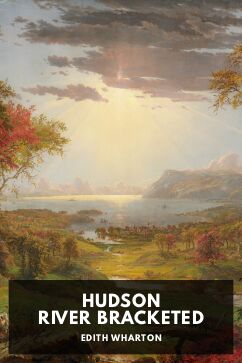Hudson River Bracketed

Description
Nineteen-year-old Vance Weston has grown up in the fictional Midwestern town of Euphoria, Illinois. Though under pressure to join his father in real estate, Vance aspires to be a poet. After falling ill just as he is supposed to choose his profession, he convalesces for a while at home until a doctor suggests time away in a better climate would aid his recovery.
Vance chooses to stay with relatives, the Tracys, in a small town not far from New York City; his hope is that he might be able to visit the latter during his stay and get his foot in the door of the literary world. The Tracys are caretakers for an old house owned by the much wealthier Spear family. Vance accompanies his cousins to the house, which is in the titular Hudson River Bracketed architectural style. In its library he meets a young woman from the Spear family, Heloise, known as “Halo.” This chance encounter is the first in a series of coincidences that will enable Vance’s writerly dreams to take shape.
Hudson River Bracketed differs from most of Edith Wharton’s novels in that its protagonist is both male and materially disadvantaged. Having distanced the main character from her own life in these two respects, Wharton allowed herself, it’s widely thought, to be more freely autobiographical in portraying her experiences as a fledgling novelist.
The novel is generally appreciated not so much for the depth of its characters, which one contemporary reviewer in the New Statesman said resembled “marionettes,” but for the light it sheds on Wharton’s own creative process of fiction writing, and her attitude towards the mercenary side of publishing—including the exploitation of new writers as a commercial strategy. Also notably explored are the many human factors that affect the awarding of literary prizes like the Pulitzer Prize for Fiction, which Wharton won in 1921 for The Age of Innocence and which explicitly appears in the novel as the “Pulsifer Prize.”
Other themes of the book are the effects of social class and material resources on literary achievement; religious and publishing trends; marriage and divorce; and the majesty of the natural environment, in particular the Hudson River Valley. In connection with this last focus, scholar Judith Saunders has also argued that the book is an extended meditation on the poem “Kubla Khan” by Samuel Taylor Coleridge, which is the subject of Vance and Halo’s first verbal exchange.
Hudson River Bracketed was first serialized without Wharton’s permission in 1928, resulting in a frenzied rush to finish it, which biographers speculate may have contributed to the illnesses of her final years. The novel was published in its entirety in 1929, when Wharton was 67. It’s her longest novel, and among the five she consistently listed as her favorites within her oeuvre. Biographer R. W. B. Lewis reports her having said: “I am sure it is my best book.” Critics and readers didn’t agree; it has never been popular. However, even its detractors admire her rich descriptions of the Hudson River Valley setting.
Wharton published a sequel to Hudson River Bracketed in 1932, five years before her death at 75.
Read free
This ebook is thought to be free of copyright restrictions in the United States. It may still be under copyright in other countries. If you’re not located in the United States, you must check your local laws to verify that this ebook is free of copyright restrictions in the country you’re located in before accessing, downloading, or using it.

Download for ereaders
-
Compatible epub — All devices and apps except Kindles and Kobos.
-
azw3 — Kindle devices and apps. Also download the Kindle cover thumbnail to see the cover in your Kindle’s library. Despite what you’ve been told, Kindle does not natively support epub. You may also be interested in our Kindle FAQ.
-
kepub — Kobo devices and apps. You may also be interested in our Kobo FAQ.
-
Advanced epub — An advanced format that uses the latest technology not yet fully supported by most ereaders.
Read online
A brief history of this ebook
More details
Sources
Transcriptions
Page scans
Improve this ebook
Anyone can contribute to make a Standard Ebook better for everyone!
To report typos, typography errors, or other corrections, see how to report errors.
If you’re comfortable with technology and want to contribute directly, check out this ebook’s GitHub repository and our contributors section.
You can also donate to Standard Ebooks to help fund continuing improvement of this and other ebooks.